When looking to get their nutrition in check, a lot of our clients want to learn how to meal plan. That's because they've heard about all of the benefits but aren't exactly sure how to get started.
And we can totally relate. If you're new to meal planning or healthy eating in general, the whole process can seem overwhelming. But when you break it down into simple, actionable steps, it seems a lot more manageable.
There are four major steps to meal planning and prepping: designing your meal plan, getting a list of recipes together, grocery shopping and the actual cooking.
Here, we break down each step to teach you how to meal plan in a simple, straightforward way that's easy to incorporate into any lifestyle.
The Benefits of Meal Prepping
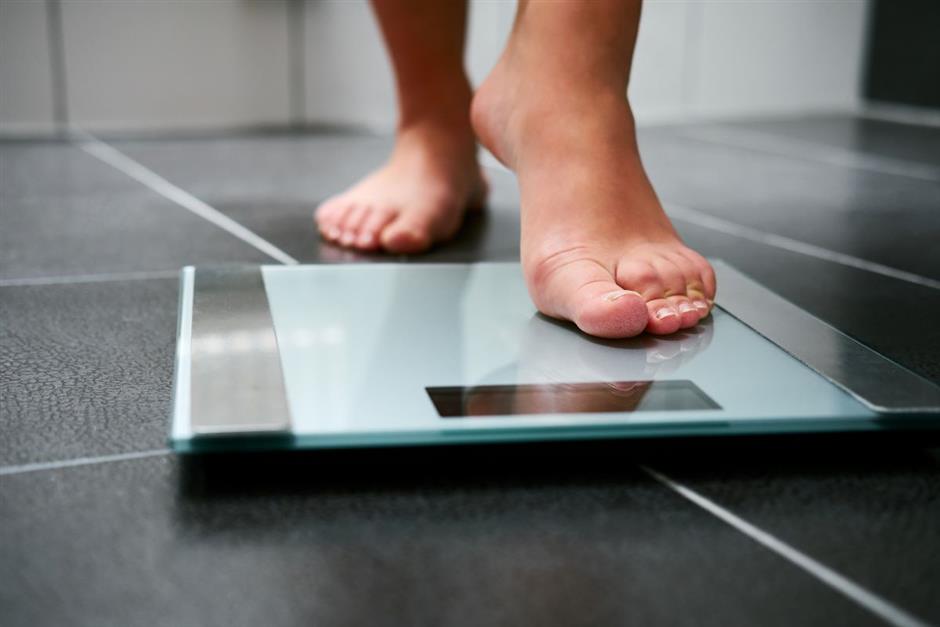
Advertisement
Before jumping into how to meal plan, it can be helpful to know why you would even want to. For starters, studies show that people who meal plan tend to have a healthier body weight than people who don't. If you're looking to lose weight, meal planning is a really great way to keep yourself on track.
People who meal plan also seem to have a better overall diet and incorporate more food variety and healthy foods, which makes it easier to get all of the nutrients you need every day.
But the benefits of meal planning don't stop there. Here are a few others:
- It can save you time and money. It might seem more time consuming at first, but ultimately, when you only have to cook once or twice a week, you'll likely save time in the long run.
- It can help reduce stress around food and what your next meal is going to be.
- It gives you full control over the ingredients in your food since you'll cook most of your meals at home.
- It prevents overeating because meals are planned and pre-portioned.
- It can reduce temptation and binging since you have easily accessible meals and you never let yourself get too hungry.
- It keeps you away from fast food and other on-the-fly options that aren't the healthiest choices.
But if you're searching for tips on how to meal plan, you probably don't need too much convincing about its merits. So, let's jump in with some tips to help you start meal planning.
Design Your Weekly Meal Plan
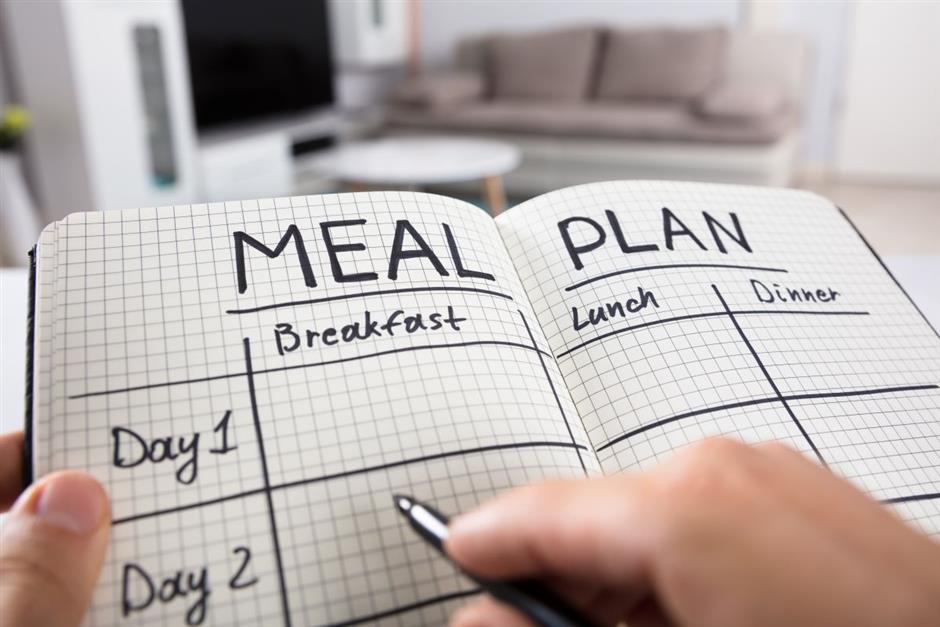
Advertisement
The first step to meal planning is designing your weekly plan. You want to figure out how many meals you need, what types of meals you need, and when you're going to be doing your prepping and cooking.
Keep in mind that this can change from week to week, especially if you don't have a consistent schedule or you have kids that have to be in different places at different times. You can adjust each week or just repeat the same meal plan over and over, as long as you don't get bored with eating the same foods. Here are the steps to follow.
Figure out how many meals you need.
Before doing anything else, you need to know how much food to cook. Are you meal prepping just for yourself or for your family too? Are you cooking meals for every single day of the week or using meal planning as a way to fill in certain meals? Once you figure this out, you can move on to the next step.
Decide what types of meals you need
There are several things to consider with this step. The first is: Are you cooking for a specialized diet? If you're following a specific diet plan or incorporating things like Meatless Monday, you'll have to make sure you're choosing appropriate recipes or that you're prepared to adjust recipes as needed.
The other part of this is figuring out where you're going to be eating each meal. Do you have to take your lunches with you to work? Are you going to be in a place where you don't have access to an oven or microwave to heat up the meals?
Advertisement
If so, you want to design your meal plan around this. For example, make salads or meals that taste good cold for lunches and save the hot meals for dinner when you can properly reheat them at home.
Schedule prepping and cooking.
Another part of meal prepping is figuring out what you're going to do and when. The process involves planning, grocery shopping and cooking, so you have to make sure you set aside some time for each of these steps.
Many people like to pick one night of the week to compile recipes and make a grocery list. They then set aside a few hours at the end of the week for grocery shopping and the actual cooking.
How this looks is totally up to you, but you want to know what this schedule is going to look like before you do anything else. That way you’ll know how many recipes you need and how much time you need to set aside to make everything.
Compile a List of Recipes
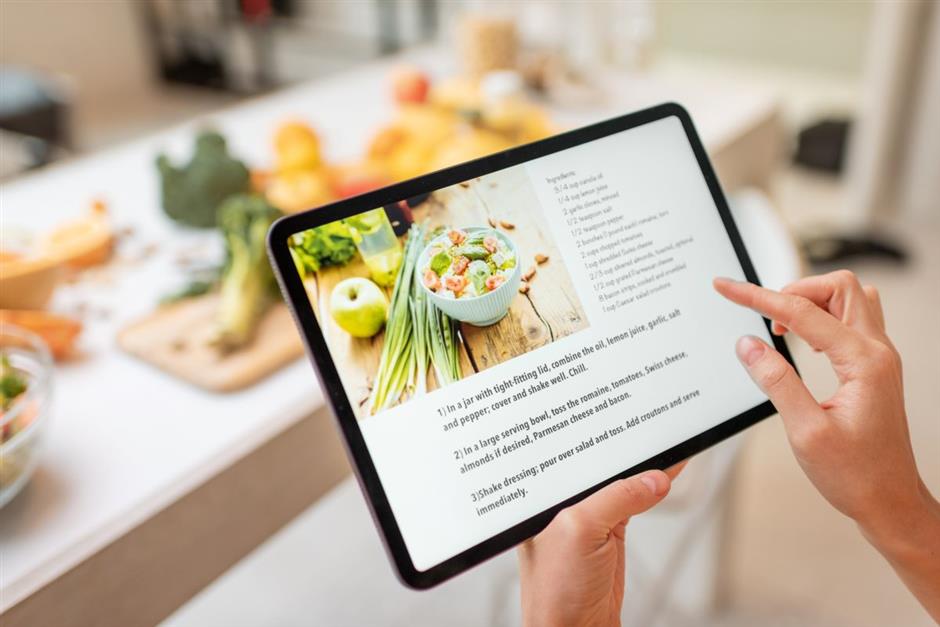
Advertisement
Once you've figured out what your week is going to look like, the next step is figuring out what you're going to make for each of your meals.
Start slow.
If you're brand new to meal planning, gradually ease into it by starting with a few meals per week and then working up to most of your weekly menu. Walking before you run will keep you from getting overwhelmed as you get used to the process.
Keep it simple.
It's tempting to go on Pinterest and pin every sliced zucchini lasagna you see, but if you compile complicated recipes or recipes that involve a lot of prep work, you'll burn out pretty quickly.
Try to keep things really simple, at least in the beginning. Stick to basic recipes and weeknight meal ideas that you can easily put together, like chicken breast and roasted veggies or a big batch of black beans and quinoa.
As you get the hang of things and meal planning becomes second nature, you can start to incorporate new recipes or more advanced ones.
Advertisement
Find recipes that utilize a Crock-Pot or Instant Pot.
There's nothing like a good Instant Pot or slow cooker recipe. These types of ingredients allow you to put everything in one pot so you can have one meal cooking while you work on another one.
Try to incorporate a few recipes like this each week. Bonus points if you don't have to do any prep work, like searing meat or cooking onions first.
Harness the power of freezer meals.
If you have an easy recipe, like a slow cooker soup, double it up and freeze half of it for the next week or some time down the road. If you do this every week, you'll have a freezer full of healthy meals that you can reach for in a pinch.
Write it down.
The benefits of writing everything out on paper cannot be overstated. It makes things a lot easier when you have an organized plan in front of you. You can use a notebook as a dedicated meal planner or print free templates online. Just search "meal planner template" in Google, and several options will come up.
Make Your Grocery List
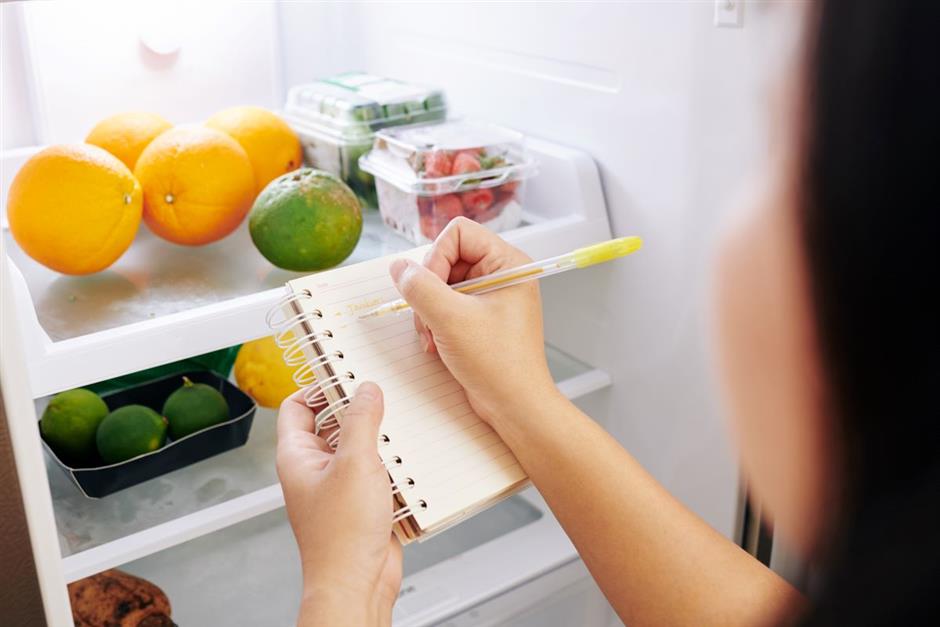
Advertisement
The next step in the process is putting together your grocery list. This part is pretty straightforward, but here are some things that can make your life a little easier.
Put together a list of ingredients.
Once you have your list of recipes, go through each one and write down everything you need to make them. Then organize ingredients together and write the total quantities of each.
For example, if three recipes call for chicken, figure out the total amount of chicken and write that down in one place.
Check your pantry and refrigerator.
Before you get your shopping list together, check to see what ingredients you have in your pantry and refrigerator and cross them off your list so you don't double up. This will help you save money and reduce food waste.
Organize your grocery list.
When you write out your actual shopping list, organize the items by where they're found in the grocery store. Divide your list into headings, like fresh produce, meat, dairy and canned goods. Then, put the items under each appropriate heading.
Advertisement
This only takes a few extra seconds in the planning stage but will save you considerable time in the grocery store since you won't have to backtrack or read through your list over and over to make sure you have everything.
Consider your grocery budget.
This next step isn't a requirement, but it can be a really helpful part of the process, especially if you're on a tight food budget. Check your weekly grocery circulars or look online at current sales and see which stores have the best deals.
If you have a couple of grocery stores nearby, you can even split up your list and do some of your shopping at one store and then finish it up at another.
Once all of this planning is done, you're ready to go shopping.
Dive Into Meal Prep
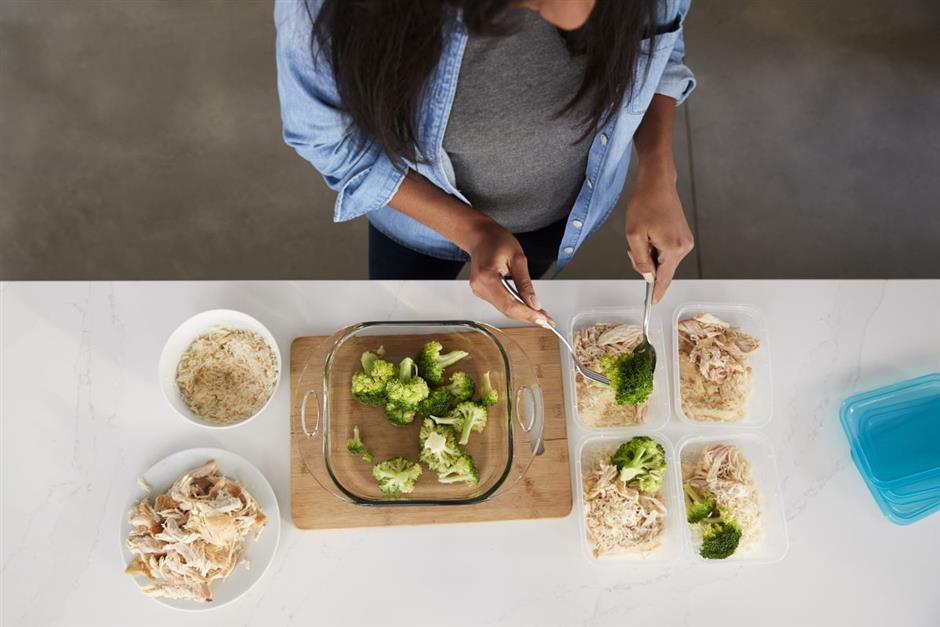
Advertisement
Now comes the good part: the actual cooking. Many people prefer to grocery shop and cook on the same day, so you don't have the extra step of putting all of the groceries away, but that's really up to you.
If you only have a couple of hours to spare each day, then you might have to split up these tasks and that's totally fine. Figure out the process that works best for you and go with it.
Commit to cooking without distractions.
When it's time to cook, plan for a couple of hours of uninterrupted time to do some batch cooking. This means that you'll cook most of your recipes at once so you have them ready to go for the rest of the week.
This might not be totally feasible, especially if you have kids, but do the best you can. During those couple of hours, keep your phone in the other room and work without distractions.
Multitask as much as possible.
Check to see if any of your recipes have similar ingredients and then multitask. Instead of going through each recipe from start to finish before moving on to the next one, combine steps.
Advertisement
For example, if you're simmering something on the stove, chop vegetables for a different recipe while you wait. If you need a total of four cloves of garlic for all of your recipes, mince them all at once instead of one at a time.
Store your meals properly.
Storing your meals is a big part of meal prep. Invest in some storage containers that keep your food fresh and properly separated.
When you're done cooking, divide your meals into these storage containers, put a piece of tape on each one and label them: Monday breakfast, Monday lunch, Monday dinner, etc. This will help you keep things organized as the week goes on.
Other Meal Planning Tips
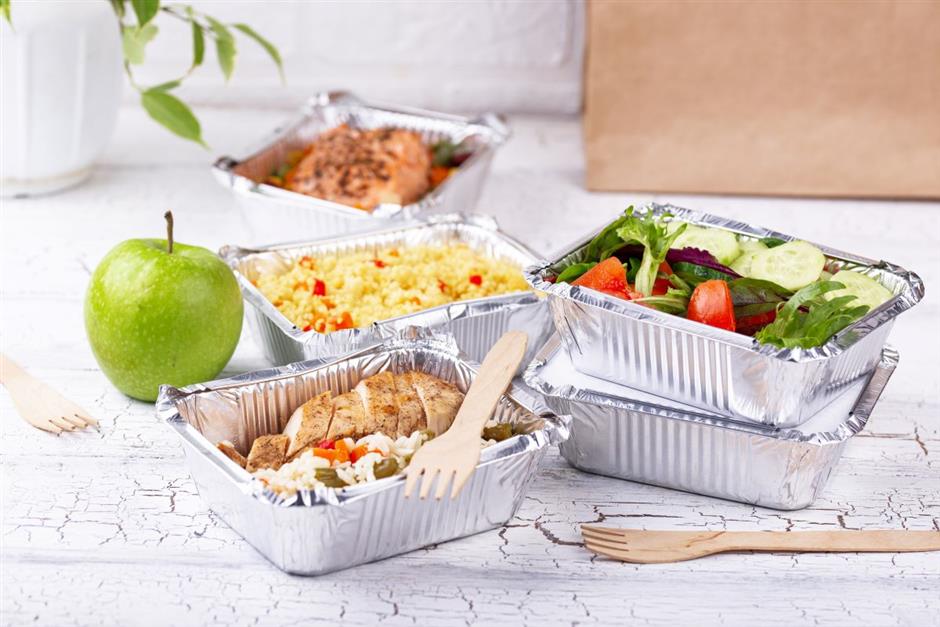
Aside from the actual process of planning and cooking, there are some things that can help make meal planning easier for you.
Advertisement
Harness the power of a meal delivery service.
When you're learning how to meal plan, it doesn't mean that you have to also learn how to become a professional home chef. While it's best to cook most of your meals at home when possible, you can also use healthy meal delivery services that bring meals to you.
There are different types of these services. Some of them deliver portioned ingredients and then all you have to do is put those ingredients together and cook. Others deliver cooked meals that you simply heat up when you're ready to eat them.
This route generally costs a little more than cooking your own meals at home, but it can be a real time-saver if you're busy and don't have time to cook every meal you need for the week.
Give yourself a free meal.
Meal planning doesn't have to feel like a strict schedule that doesn't allow for any flexibility. It's meant to serve as a tool to keep you on track and increase your chances of success.
When you're meal planning for the week, schedule a free meal. If you know you have upcoming dinner plans with a friend or that your work is catering lunch, leave it open for your free meal. You can even use this free meal as a time to get takeout with your family and take the night off from cooking.
Advertisement
Buy things in bulk.
After a few weeks of meal planning, you'll likely notice that you keep coming back to some of the same ingredients over and over. If there are staples that you use, like chicken breasts or brown rice, you can save yourself some money (and shopping time) by buying these things in bulk and stocking your freezer and pantry.
This also gives you the power to do some comparison shopping. Wholesale clubs and online retailers often have better prices than local grocery stores. If you can plan ahead and nab these things in bulk when they're on sale, you can stretch your grocery budget even further.
Let Us Help You
Organizing and meal prepping can seem like a lot of work, especially if it's something that's brand new to you. But the more you make it a habit, the easier it will get.
If you're feeling overwhelmed or need help getting started, a 1:1 nutrition coach can help you through each step of the process — from designing your schedule to picking out healthy recipes to getting organized on cooking day.






